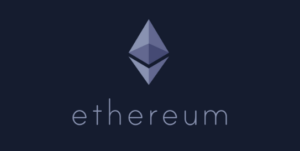Ethereum (ETH) Price Update: Analysts Bullish on Potential $22k Price Target as Network Activity Surges

Ethereum, the second-largest cryptocurrency by market capitalization, is currently witnessing a surge in network activity and adoption. This growth has prompted analysts to forecast substantial price increases for ETH in the upcoming years.
Matthew Sigel, head of digital asset research at VanEck, predicts that by 2030, the Ethereum network could potentially generate up to $66 billion in annual free cash flow. This projection is founded on the network’s increasing involvement in processing global transactions. Sigel highlights that Ethereum managed approximately $4 trillion in settlement value over the past year, along with $5 trillion in stablecoin transfers annually.
Sigel compared Ethereum’s network size to giants like PayPal and Visa, emphasizing its significant growth potential. Based on these assessments, Sigel suggests that the price of ETH could soar to as high as $22,000 per token by the end of the decade, a substantial leap from its current value of around $2,300.
On a more conservative but optimistic note, David Kroger, a data scientist at cryptocurrency brokerage StoneX, envisions ETH prices climbing to about $4,600 within the next 18 months, with the potential for further growth to reach approximately $12,621.
These price projections are bolstered by various key metrics indicating robust network activity and adoption. For instance, on September 1, Ethereum’s daily gas usage hit a record high of 109 billion, despite recent low gas prices, signifying sustained demand for Ethereum’s network.
Moreover, Ethereum’s on-chain stablecoin volume has surged to a record $1.46 trillion, more than doubling from $650 billion earlier this year. Notably, DAI led the stablecoin market with $960 billion in volume, while USDT and USDC continued to dominate as well.
The uptick in stablecoin volume is attributed to the increasing demand in decentralized finance (DeFi) and heightened participation from traditional financial institutions. Additionally, Layer 2 (L2) solutions such as Arbitrum, Base, Optimism, and Mantle are pivotal in propelling Ethereum’s scalability and adoption, contributing to the network’s long-term potential.
Despite recent challenges, including a sharp revenue decline following the March Dencun upgrade, which slashed transaction fees by about 95%, analysts like Sigel remain positive about Ethereum’s capacity to rebound. Sigel expressed optimism about Ethereum’s ability to regain value in the latter part of the year.
As Ethereum ventures into the final quarter of 2024, a period historically marked by increased trading volume and price fluctuations in crypto markets, investors and analysts will closely monitor key metrics like funding rates. These rates, indicating the balance between long and short positions in futures markets, have been hovering at relatively low levels between 0.002 and 0.005. Analysts suggest that a surge above 0.015 could herald the beginning of a new price rally.



